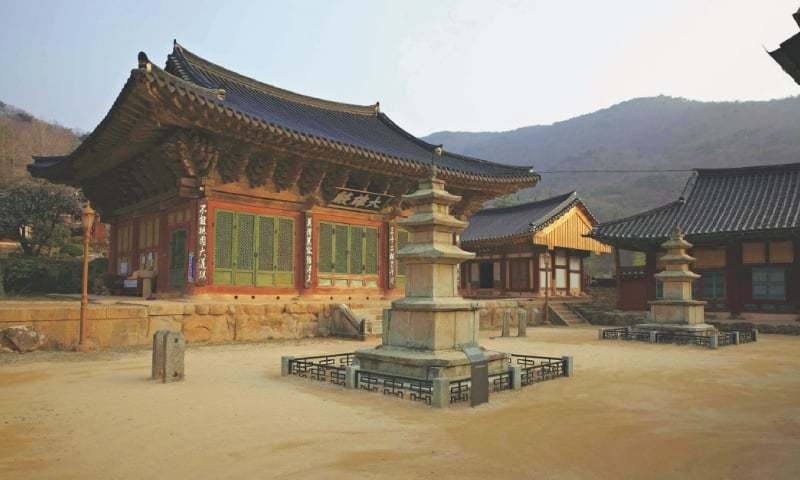Unesco lists World Heritage sites

Unesco on Saturday added eight pre-Islamic Iranian archaeological sites, Mumbai’s Art Deco buildings, seven ancient Korean mountain temples and a dozen Christian locations in parts of southern Japan to its World Heritage List, the UN agency announced at a meeting in the Bahraini capital.
The Iranian sites collectively appear on the worldwide list as the “Sassanid Archaeological Landscape of Fars region (Islamic Republic of Iran)”. A province in modern-day Iran’s south, Fars was the cradle of the Sassanid dynasty, which appeared at the start of the third century.
“These fortified structures, palaces and city plans date back to the earliest and latest times of the Sassanian Empire,” Unesco said. With the latest addition, Iran now has 24 sites on the heritage list.
Art Deco buildings
Mumbai’s Art Deco buildings — believed to be the world’s second largest collection after Miami — were also added to the list alongside the city’s better-known Victorian Gothic architecture.
The majority of them, built on reclaimed land between the early 1930s and early 1950s, are clustered together in the south of the coastal city where they stand in stark contrast to Victorian Gothic structures. Mumbai’s Art Deco buildings house residential properties, commercial offices, hospitals and single screen movie theatres, including the popular Regal and Eros cinemas. Their characteristics include elegant Deco fonts, marble floors and spiral staircases.
Ancient mountain temples
Seven ancient Korean mountain temples, which typify the way Buddhism in the country has merged with indigenous beliefs and styles, were also included. The seven mountain temples — Seonamsa, Daeheungsa, Beopjusa, Magoksa, Tongdosa, Bongjeongsa, Buseoksa — were all established during the Three Kingdoms period that lasted until the seventh century AD.
Buddhism was imported to the Korean peninsula in the fourth century and accepted by the ancient kingdoms of Goguryeo, Baekje and Silla, establishing it as the national religion for more than 1,000 years.
During the religion’s heyday in the fifth and sixth centuries many houses of worship were built under strong state patronage, accelerating the importation of Buddhist culture, architecture and style.
Over time, elements of traditional Korean beliefs merged into the religion. Temples were built on high positions protected by hills and commanding an open view over other mountains.
Hidden Christian sites
A dozen Christian locations in parts of southern Japan where members of the faith were once brutally persecuted were selected for inclusion on the Unesco Heritage list.
The 12 sites include 10 villages, Hara Castle and Oura Cathedral, a Catholic church in Nagasaki that is dedicated to 26 Christians who were executed for their beliefs over four centuries ago.
Unesco said that the 12 sites “bear unique testimony to a cultural tradition nurtured by hidden Christians in the Nagasaki region who secretly transmitted their faith”.
Christianity in Japan dates back to 1549, when European Jesuit missionary Francis Xavier arrived in the country with two companions and the religion began spreading in western Japan.
As more missionaries arrived and the faith spread, Japanese military leaders became increasingly suspicious of its growing influence and a crackdown against Christians began from 1589.
For Japanese converts, hiding their religion became a matter of life and death for the next 250 years, with Christianity banned and Japan closed to the outside world.
As they practised their faith but tried to blend in, the Christians created a blended religion that incorporated elements of Buddhism. It wasn’t until 1865 that these “hidden Christians” or Kakure Kirishtan became known outside of their communities.
The martyrdom of hidden Catholics and Jesuit missionaries in Japan in the 17th century was the subject of the 2016 Hollywood film Silence, directed by Martin Scorsese.
